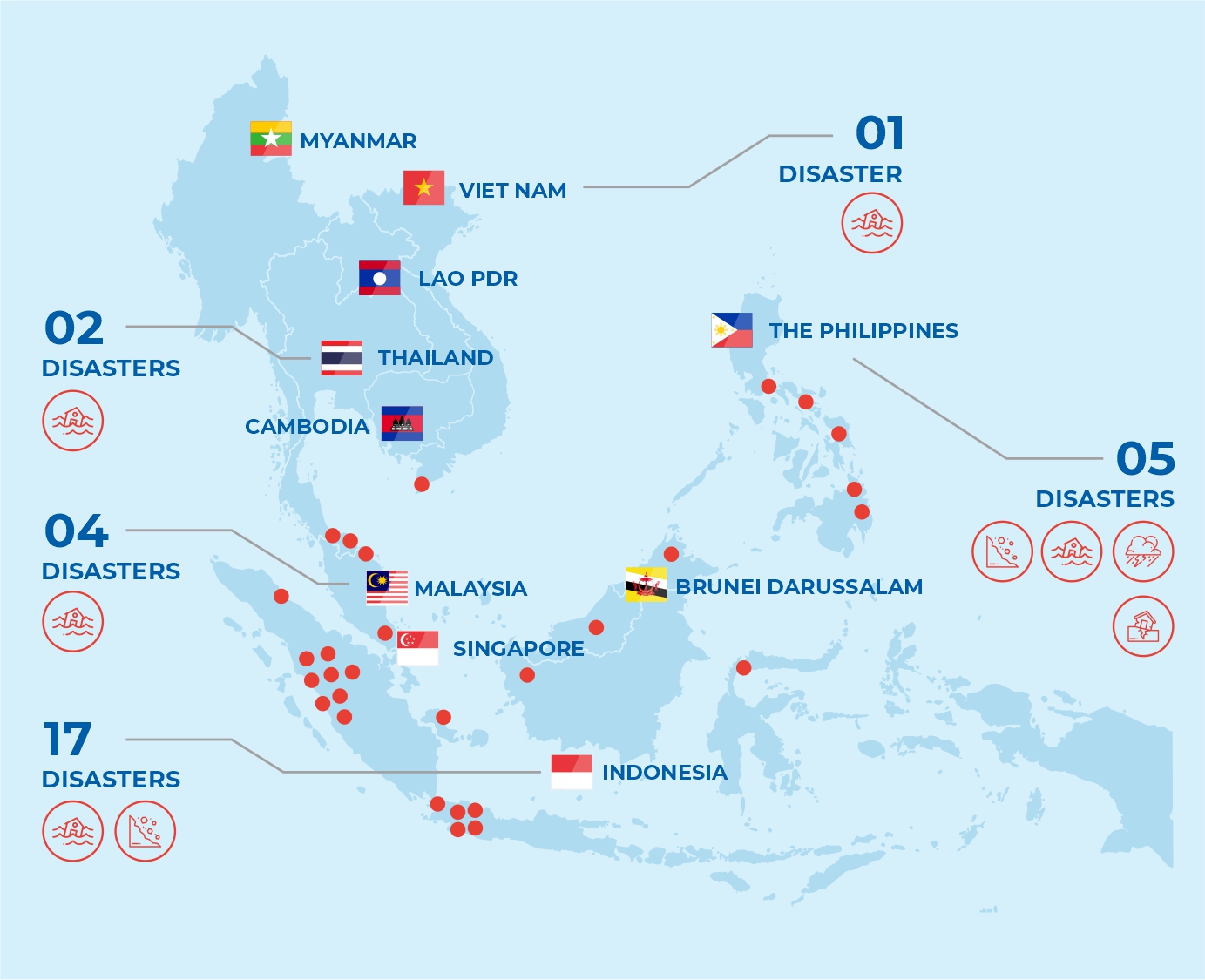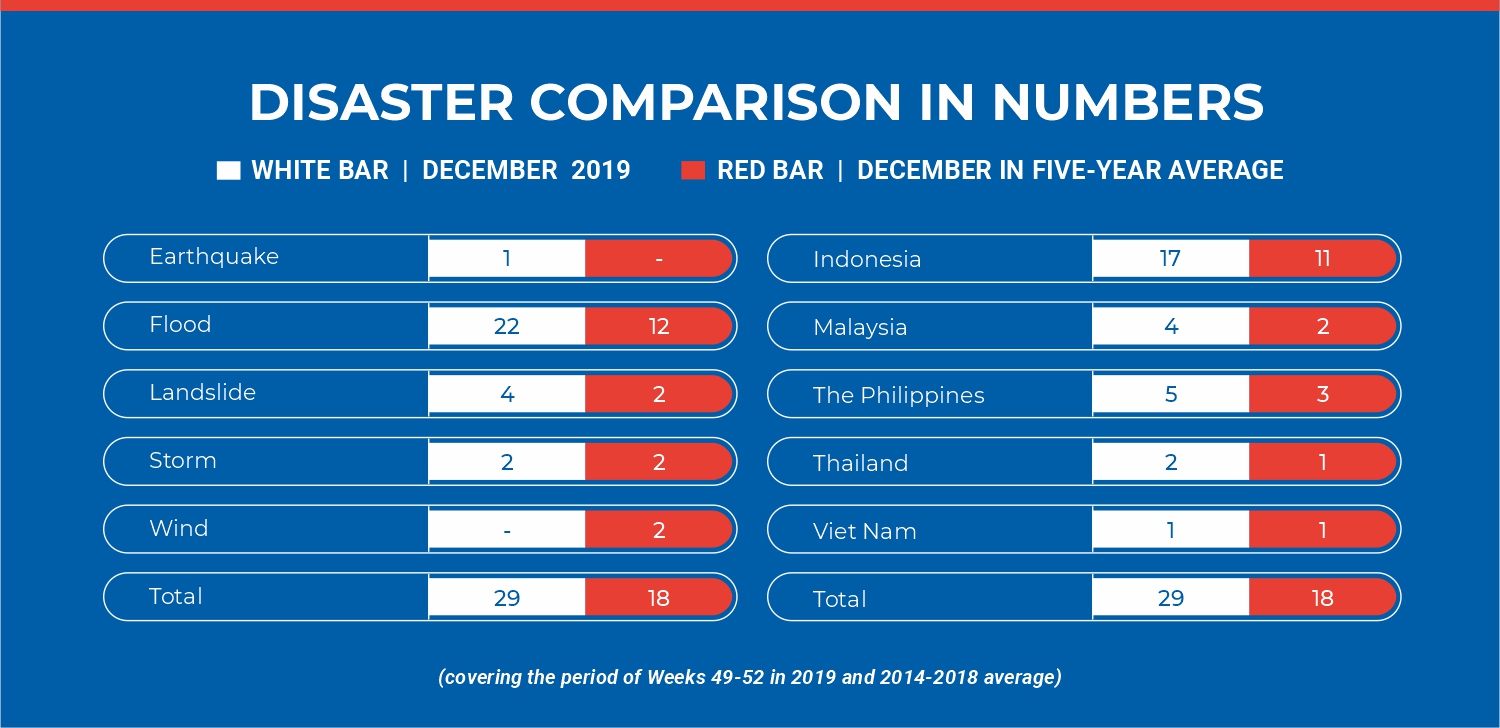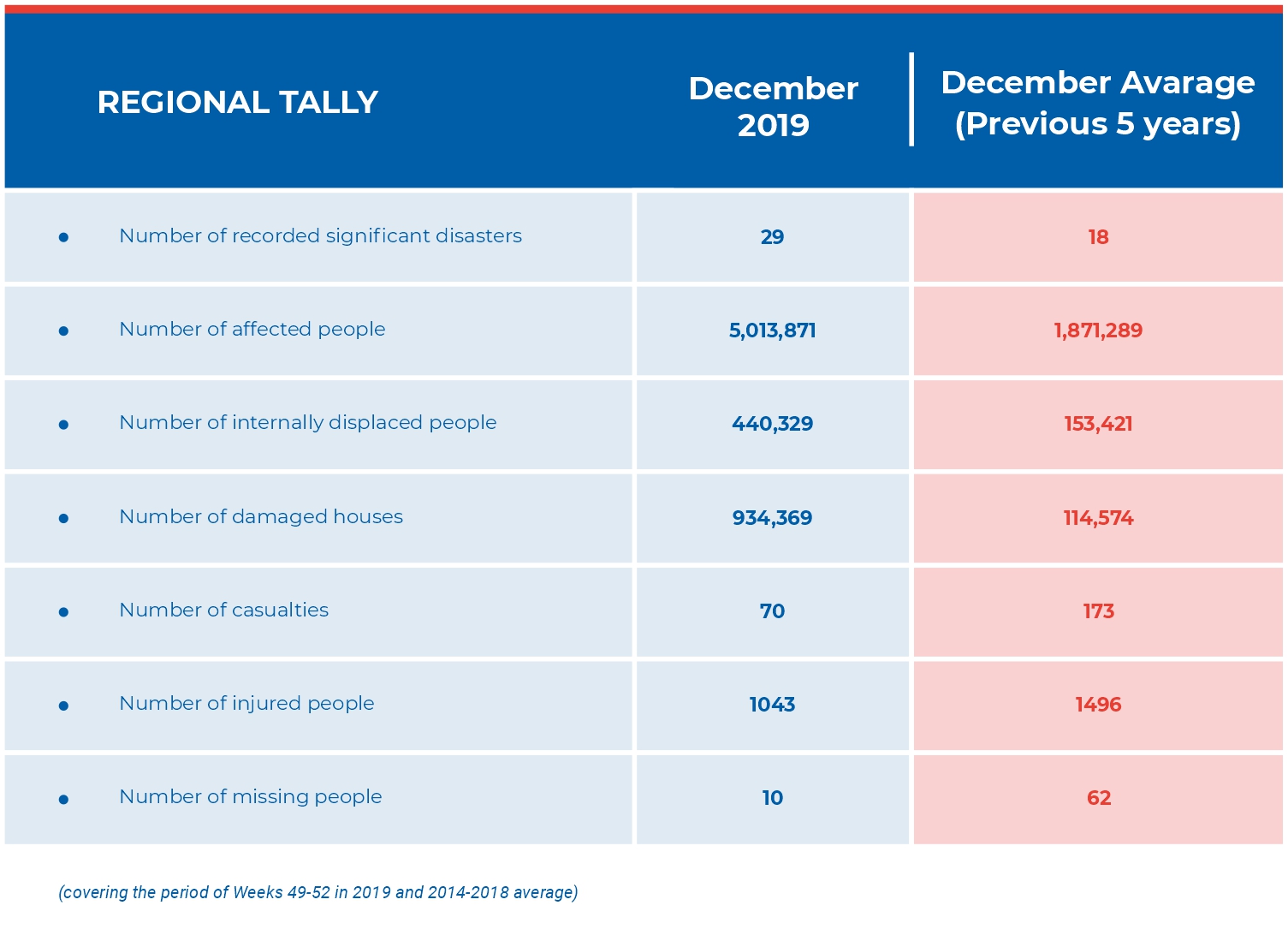
MONTHLY DISASTER REVIEW AND OUTLOOK
DECEMBER 2019 | DISASTER MONITORING & ANALYSIS
(DMA) UNIT, AHA CENTRE
GENERAL REVIEW OF DECEMBER 2019
December 2019 significantly shifted from the previous five-year average December disaster statistics, recording a higher number of occurrences, impact to population, and damage to houses, albeit with lower casualty rates. The number of disaster occurrences experienced a 61% increase compared to the previous five December periods, with flood events contributing the largest share. A majority of flooding events took place in Indonesia towards the end of the month when the country was experiencing strong impacts from the Madden-Julian Oscillation. Meanwhile, considerable deviations in the number of affected (168% increase from the five-year average) and displaced (187% increase from the five-year average) people and damaged houses (716% increase from the five-year average) were driven by Typhoons KAMMURI (equivalent to Category 4 hurricane at peak strength) and PHANFONE (equivalent to Category 2 hurricane at peak strength) hitting the Philippines within a three week timeframe. Combined, both typhoons are estimated to account for 79% of affected people figures, 55% of displaced people, and 97% of damaged houses reported in the last month of 2019.
On the other hand, there were notable decreases in casualty figures compared with the five-year average – with 60% decrease in dead, 30% decrease in injured, and 84% decrease in missing people. This suggests that in spite of extensive disaster impact this month, life-saving mechanisms in ASEAN Member States were effectively implemented. In terms of geophysical hazards, there were 24 recorded earthquakes of magnitude 5.0 and above, one of which was a magnitude 6.9 earthquake in the Southern Philippines, affecting hundreds of thousands of people, and contributing to more than a quarter of the displacement figures.
SEASONAL OUTLOOK
The ASEAN Specialised Meteorological Centre (ASMC) expects the Northeast Monsoon to prevail over the region until late March to early April, before transitioning towards the inter-monsoon phase. Traditionally, the Northeast Monsoon results in a dry season in the northern ASEAN region, while the rainy season persists in the southern parts of the region. In terms of main weather and climate drivers in the region, both El Niño Southern Oscillation and Indian Ocean Dipole systems are expected to be in neutral phase for the next few months, and there are signs of weakening Madden-Julian Oscillation over the coming weeks.
Above-average temperatures over most parts of the ASEAN region for the next few months is predicted by global weather and climate prediction models, with moderate to high probability of this happening. Alongside this, below-average rainfall is predicted over Myanmar and the Philippines, while there is a higher chance of above-normal rainfall around the Java Sea area and the eastern archipelago of Indonesia, which may result in flooding.
Data Sources: ASEAN Disaster Information Network, ASEAN Specialised Meteorological Centre
Written by : Lawrence Anthony Dimailig and Shahasrakiranna
DISCLAIMER
Disclaimer: AHA Centre’s estimation is based on data and information shared by National Disaster Management Organisations (NDMOs) and other relevant agencies from ASEAN Member States, international organisations and news agencies. Further information on each recorded-significant disaster, description and detail of data and information are available at: http://adinet.ahacentre.org/reports.



